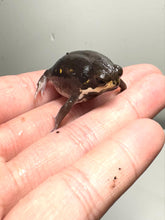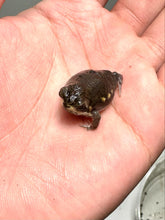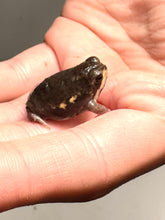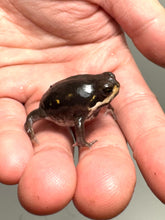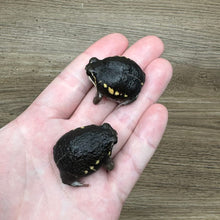
Name: Breviceps poweri, commonly known as Power’s rain frog, is a small, elusive amphibian that belongs to the family Brevicipitidae, a group of frogs characterized by their burrowing behavior and stout bodies. First described by Hampton Wildman Parker in 1934, the species was named in honor of John Hyacinth Power, a prominent South African naturalist and museum director. Despite its relatively obscure status in popular knowledge, B. poweri holds ecological significance and displays fascinating adaptations suited to a fossorial lifestyle in the savannas and woodlands of southern Africa
Recommended Housing: Rain frogs don't need a lot of height in their enclosure. A 18x18x12 or a traditional 10 gallon is sufficient for up to 5 frogs. These frogs require soft, and easily crushable Japanese black soil, aka aquarium black soil. Simply provide at last 2 inches deep of substrate and spay half the surface area with water and leave the other half dry.
Temperature: 75-85 F
Size: About 0.5"-3"
Adults reach size of 1.5"-3.5". Females are significantly larger
Age: With proper care, they can live up to and over 10 years.
Feeding: Live insects, they prefer smaller live insects such as crickets and roaches.
Sexing: Female are significantly larger than males
Social Behavior: These frogs are communal, and can be housed together with little to no risk or cannibalism.
This listing is for wild caught individuals.
THIS IS A STOCK PHOTO, you will get something very similar. Stock photos are fair representation of the actual animals.






